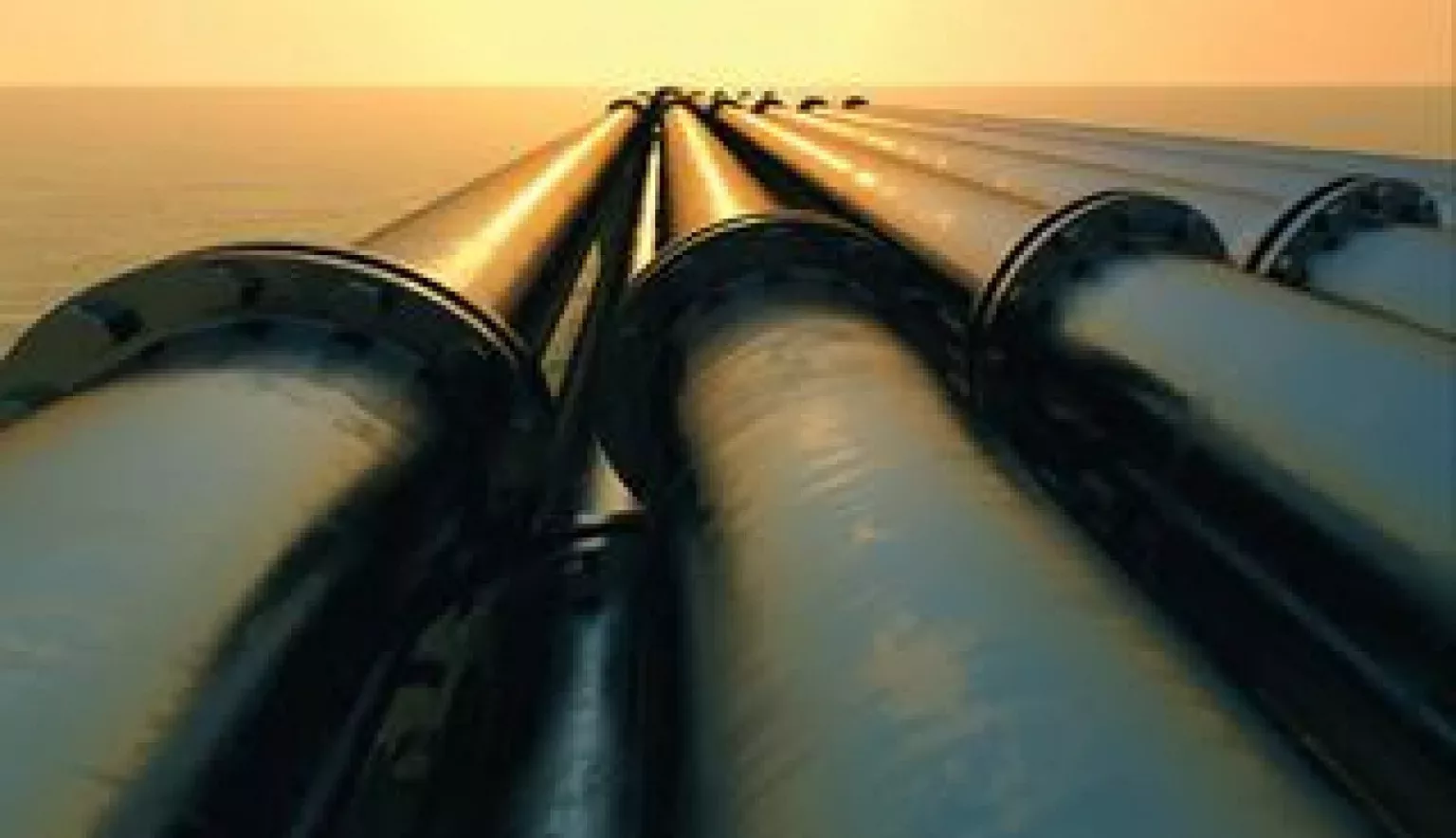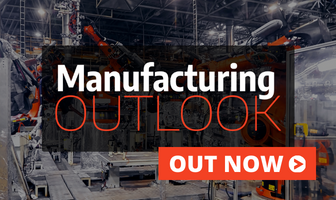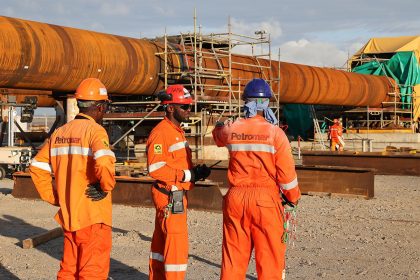Saint-Gobain Pipelines SA has done the groundwork to secure future business by upgrading their industrial technologies.
NEW TECHNOLOGY IN THE PIPELINE
Saint-Gobain Pipelines SA, previously known as Besaans-du Plessis, manufactures grey and ductile iron castings for use in various sectors. These include industrial and general engineering applications, cast iron cookware (Potjie Pots), access covers, and soil and drain systems. They are a second tier supplier to the OEMs (Original Equipment Manufacturers) in the industrial and engineering sector who, in turn, supplies mainly into the railway, mining and construction markets. The cookware products have various routes to market, while all access covers and soil and drain products are manufactured for their sister company, Saint-Gobain PAM. Manufacturing is done in Pretoria West, Gauteng province. “Saint- Gobain purchased the company in 1998 as it provided a platform for entering the Southern African market. Besaans-du Plessis was an established manufacturing company with commercial presence in all the major cities and was well-known in the market,” explains Stefan Du Toit, General Manager of Saint-Gobain Pipelines. “This investment fitted well with our global strategy of being present in all of the markets we serve in over 60 countries.”
Supply chain and supplier partnerships are extremely important for Saint-Gobain. With long-standing partnerships with suppliers that understand their business, very few of their materials and components are imported. “We do import some components through our international Saint-Gobain sourcing teams and offices. By using these structures, we know that we are getting the best prices and service. It is important to source from companies we regard as responsible employers,” Du Toit remarks.
WHAT MAKES THEM DIFFERENT?
When I asked Du Toit what makes the company stand out in an industry so full of competition, he explained how the importance of being a local business partner has maintained customer relationships for up to 20 years: “We compete with local foundries and import traders. We have a casting solution which includes everything from basic casting modelling, to pattern making, to machining with various coating options. This allows the customer to purchase a finished product ready for assembly with local support,” he continued “we recognise that there is value in having a local supplier. This gives the customer the ability to manage risk and working capital more effectively.”
Boasting ISO:9001, ISO:14001 and OHSAS:18001 certifications, Saint-Gobain realises the importance of sustainability and quality when it comes to the bigger corporations that they supply into. Saint- Gobain Pipelines believe this gives them the edge on many of their manufacturing competitors from the East.
BIGGEST CHALLENGES
There are many challenges impacting Saint-Gobain Pipelines SA, and the foundry industry in general, of which two probably stand out above the rest, as Du Toit outlines: “Firstly, the continued increase in electricity prices has hit us, and the industry, hard in the last four years. With annual price increases ascending into double digits, it has forced us to look at our installed technology and to find solutions that are more energy efficient. This requires capital.” The second challenge is finding suitably skilled people that can help drive manufacturing efficiencies. The latter was identified recently by industry organisations and the South African Government, and plans have been laid down to up-skill the industry. “When you are fighting competition from the East with the kind of local manufacturing inflation we are facing, you have to continually drive your productivity and manufacturing efficiencies, which are very difficult to achieve without the right skills. This is critical if we want to remain competitive.” Specially trained staff such as pattern makers, foundry technicians, metal smelters and moulders have started to decline in the industry, which means this up-skilling scheme will drive efficiency in the foundry industry.
FOCUSING ON HEALTH AND SAFETY
Saint-Gobain is serious about employee health and safety, and it comes as no surprise that the company puts a lot of resources toward achieving what they call ‘ZERO HARM’. Du Toit confirms: “In the last two years, we have improved the general working conditions in the foundry through new dust extraction systems and have been working on improving general safety in the plant in line with the Saint-Gobain Group safetys tandards.” the company has not spent money in expanding capacity. Instead they are making significant investments internally focussing on product quality through strategic improvements, such as replacing chemical analysis instruments in their laboratory with the latest technology, improving measurement capability in machining and materials handling. Driving industrial efficiencies is part of modern day manufacturing and the management team at Saint-Gobain made the decision to implement World Class manufacturing techniques.
“This toolkit already existed within the larger Saint-Gobain Group and we started implementation in 2013. It isn’t a major project from an infrastructure perspective, but it involves all 280 people on site focussing on achieving ZERO LOSS. This concept includes health and safety, customer service, people development and operational development efficiency. Du Toit believes that the company will succeed in sustaining the improvements made as there is a strong “people development” element to the programme. He says: “Sustainable change is only possible through robust processes and engaged people.” The industrial strikes in the mining sector have been ongoing since the middle of last year, which have affected some of Saint-Gobain’s business. Nevertheless, Du Toit is able to highlight some upsides: “the Government is spending a significant amount of money on upgrading the railway structure. There is a requirement for local content for all of the suppliers into this infrastructure development.” the project has just started, and most of the major contracts have been awarded to the international players, who are now in turn trying to source from local suppliers. If Saint-Gobain secures a contract, the company will be looking at a 5-10 year supply into the rail development programme.
Additionally, the South African market has shown signs of recovery and growth in the construction sector after the decline in the market following the 2010 world Cup and the recession. As a result, market leaders supplying into the construction sector are returning to Saint-Gobain as customers, and the company is seeing the benefit of this.
GEARING UP FOR THE FUTURE
Saint-Gobain Pipelines SA is continually looking forward. Currently they are reviewing the feasibility of upgrading their melting technology in around 18 month’s time. Du Toit hypothesised: “We continuously look at manufacturing cost and in this case energy efficient melting technology is very high on the list. This also fits well with Saint- Gobain’s focus on sustainability through manufacturing and products.”
The company has an ambition to provide the best value solution to customers. This includes quality, price and service. Being able to compete with the East on price will be the main focus in coming years. It is important to keep in mind that the company has been in operation for nearly 70 years. Du Toit pondered on how, when reviewing old company marketing material, it was good to see that Saint- Gobain Pipelines has always recognised the loyal support of their customers throughout these years. “We believe, even today, that establishing lasting partnerships with customers who are market leaders is critical for business success and continuity.” Du Toit adds: “The Saint-Gobain Group celebrates its 350th birthday next year, proving that the company is a sustainable organisation with solid foundations.”
It is clear that Du Toit has a clear understanding of the market, as his company continues to build its business strategy around the customer and its people. “Unless we invest in our people and technology to keep up with the latest trends and prices, we will fall behind our competitors. Establishing lasting partnerships with our customers is very important; we need to understand their business and find a way to add value as a supplier.”
Saint-Gobain is the world leader in sustainable habitat and construction markets. The company designs, manufactures and distributes building materials, providing innovative solutions to meet the growing demand for energy efficiency and for environmental protection. In South Africa, it is determined to develop construction solutions that will meet the requirement of SANS 10400-XA and SANS 204 (energy efficiency in buildings). Gyproc (plasterboard and gypsum plasters), Isover (glasswool and mineral wool insulation), Norton (abrasives and cutting tools), PAM (ductile iron and cast irons products) and Weber (industrial mortars) provide the construction industry with system solutions.































